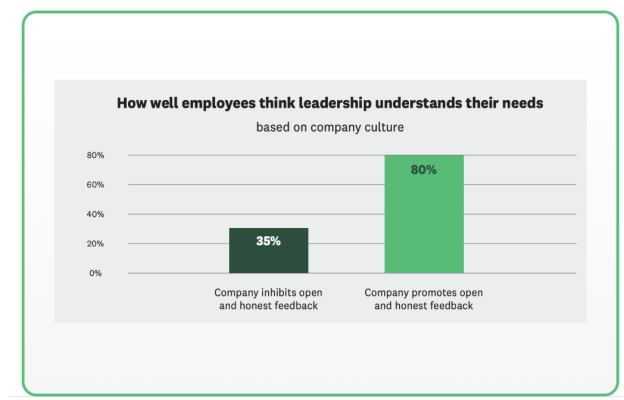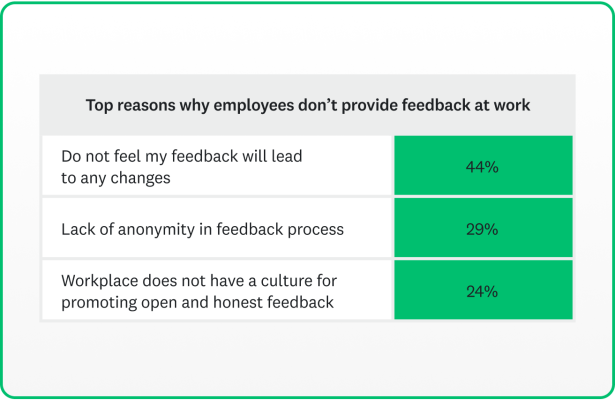Most leaders believe they are always communicating with their people: in all-hands meetings, emails, team huddles, and Slack posts. All good practices, but your employees might need more, especially if most of your communications are a one-directional blast.
Employees want to understand what’s going on behind the scenes. They want to be trusted with both good and bad news, and understand why decisions are made. They want to know how their role fits into the bigger picture and how they can make a difference. They want honest assessments about what worked, why it worked—or why it didn’t.
This kind of transparency can be incredibly motivating for employees. It’s like watching a football game where the players are wearing microphones. The “hot mic” allows you to hear it all: the contact during a tackle, the comments between opposing players, and the physical effort when a tackle is made. Witnessing those actions is enlightening, and acts as an example of how engaging it is to have insights into the inner workings of a team or organization.
Feedback is the fuel
Transparency depends on leaders purposefully getting relevant information out to employees. But it’s not a one-way street. Feedback should flow back and forth—from leadership to employees, and from employees to leadership. And once it does, it will become an invaluable tool to help establish organizational transparency.
In a recent study, we found that employees who work in companies where feedback is supported are twice as likely to believe that their leadership understands their needs, compared with employees at companies where feedback is inhibited.

Companies that support a culture of feedback are also more likely to experience the benefits of transparency. Across the board, we found that a feedback culture increases the success of almost all HR outcomes—from how employees feel heard, to their level of engagement, to their perceptions of HR and leadership.
For my part, I like to ask my immediate team to provide feedback on communications I plan to send out. I’ll ask, does this resonate? When people have a different perspective, which they often do, I try to leverage it.
Listening to their feedback opens a channel where my team feels more comfortable asking for honest feedback themselves. I’ve found that the act of asking for feedback—and acting on it—forges a connection of trust between leaders and their teams.
First comes transparency, then comes trust
None of this is easy. Asking for feedback means you’re going to get it, the good and the bad. The fear of receiving tough feedback is usually the main reason leaders don’t ask. But, pushing through that fear helps everyone—particularly employees, who often feel that providing feedback is futile.
We asked employees who decline to give feedback, when they have the option, why they don’t respond to the opportunity. Almost half said they don’t believe their feedback would lead to positive change. That’s basically a “no confidence” vote that their leadership will listen and take action.

In reality, employee feedback probably can’t always result in change. But, an organization that practices transparency can put feedback to use to give employees access to relevant information that lets them participate in a solution—and share accountability.
That brings us to another magic word in the toolkit of organizational transparency: trust. Our first instinct is to only ask for feedback from people we trust: our colleagues, our managers, or someone who might not have a stake in the situation. It’s natural to think that first you gain trust—then you feel comfortable being transparent.
Actually, the reverse is true. Trust comes from being transparent. Because the vulnerability needed to acknowledge a negative outcome or ask for feedback is what opens the floodgates for people to be honest and forthcoming themselves. Transparency is actually a tool to build trust, not a precondition.
And when the top leaders in an organization model transparency in an open and honest way, others will follow.
3 proven actions leaders can take to build greater transparency
1. Be vulnerable
Being transparent is easy when things go right. A town hall where all the outcomes and indicators are pointing up is a dream scenario, but that’s typically not reality. Every company faces challenges that employees feel—unrealistic sales goals, shifting strategies that may not make sense at first, or sometimes layoffs that lead to more work for those that remain.
Leadership needs to be willing to be vulnerable when things go wrong. It might be as simple as saying, “hey, it didn't work out the way we thought, but here’s the logic we used to make the decision.” And, once the learnings come in, it’s important to add “here’s why.”
2. Know how much is too much
Employees are able to get a lot of information, and it doesn’t always come from internal communication channels. Whether it’s social media, job boards, or company reviews, more information is being shared than you probably realize. That means employees expect more context and insights into what's happening than might be appropriate.
The fact is, you don’t always know—or can’t always share—that context. Transparency is not about always giving everybody everything they want to know. It's building trust that you’re sharing what you can share or what you know to be true. Trust needs to be built across the organization at all levels and at every step in the employee lifecycle—from onboarding, to 1:1s, to company-wide meetings.
Because an employee who experiences consistent transparency will trust that when something does arise, they will get accurate and timely notice and information at the right time.
3. Embrace microcultures
Team culture needs to be acknowledged. When San Francisco tight end George Kittle wore a microphone during a game, he led the offensive team with a positive, fun, and loose demeanor, which lifts all the players and staff. It’s also in direct contrast to teammate Fred Warner, whose intensity and work ethic has supercharged the defense.
Here’s the point: microcultures are critical to building employee trust. A small team microculture might have it’s own practices, goals, and relationships that differ from the organization's overall culture. This shouldn’t be considered a problem—anytime an employee finds a sense of loyalty and engagement, that’s a win. Leaders who support their team’s microculture are creating an environment where feedback can be shared with confidence.
That’s why it's so important for leaders to consider how their organization’s overall feedback system works for individual teams. This really helps to build the kind of relationships between employees and organizations that last, and encourage employees to stick around longer.
Ultimately, transparency helps organizations keep their best employees and recruit employees that are more inclined to succeed. By letting candidates know what they’re really getting into, companies have a better shot of recruiting, landing, and keeping employees that are a good fit for the organization.
Support organizational transparency
Assess your company's openness with employees with a survey template made in partnership with organizational expert Constantinos Coutifaris.



